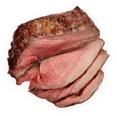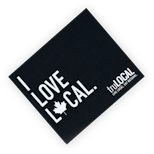Building Muscle and Eating Clean
How to Align Strength Training with Nutrition
 Back
Back






How to Align Strength Training with Nutrition

Eating clean is a term mentioned quite a lot in the world of health, fitness, and nutrition. But many people struggle to get a clear understanding of what clean eating is, and what kind of clean eating will suit their individual needs. We live in an age where there is a wealth of information about clean eating, and fitness, but if you are new to the scene, it can be overwhelming. If you are a seasoned fitness and nutrition fanatic, then this will be a great addition to the information already at your fingertips.
So what is clean eating and why do people in the world of fitness place such a huge value on it? There are a variety of definitions and explanations of what clean eating is. Simply put, clean eating is eating or sticking to food that is fresh, with minimal or no processed food. It is about eating food that is as close to its natural state as possible. It incorporates a high level of fruits, vegetables, lean protein, healthy fats, and whole grains and stays away from foods that contain additives or preservatives.
Clean eating may involve planning meals once a week and meal prepping. Take the time to do research, understand what your body needs, and set clear body goals to incorporate a goal-based eating plan with your training. Now if you are looking to build muscle and your workout includes strength training, it is important to understand the value of clean eating and how clean eating can best help you achieve the results you need.
Exercise and a well-thought-out nutrition plan are the way to go. Proper nutrition can prevent the occurrence of loss of muscle tissue. In addition, eating clean can help you replenish nutrients, assist in building muscles, help avoid fatigue, and ensure that your body recovers after training.
Strength training is a vital part of any exercise regimen. It offers several benefits. Such as helping to reduce body fat, burning calories faster, and increasing lean muscle mass. What several people may not be aware of is that as you grow older, lean muscle mass begins to decrease while body fat increases. Strength training is a great way to help preserve lean muscle mass. If you are a person who incorporates equipment like power racks in your training, which are excellent for building strength, and muscle mass, then you are a great fit for a nutrition program that will help your body recover and decrease your risk of injury. It also offers a variety of other benefits such as helping to develop strong bones and helps in weight management, and a great thing about this kind of training is that it can help you stay on top of any chronic conditions that may creep up on you.
Strength training is a great way to increase your flexibility and avoid the risk of injury. Also, it is good for building muscle mass, endurance, and strength. The types of strength training include circuit training, explosive power training, muscular endurance, and muscular strength to mention a few that would align well with a great nutrition program. Its benefits include boosting your metabolism to burn calories, making you stronger, decreasing abdominal fat, and boosting your mood and mental health.
For strength training, it is important to create a nutrition program that is tailored to the strength training program that you are following. Create a nutrition plan that aligns with your training goals. Your nutrition and training plan need to go well together to ensure results. Consistency and effort will be pointless if you do not create a routine centered around creating discipline, monitoring your intake, and maintaining consistency. Having a nutrition program that aligns well with your training encourages visible progress and will motivate you to stay consistent and disciplined. It is not just about eating the right food. It is about focusing on eating the right foods at the right time.
The best way to ensure to align training with nutrition well is to stick to the following tips.
Protein packs a mean punch - The recommended protein intake is 0.8 grams per kilogram of body weight. Protein is important for your body as it is essential for muscle repair and it can be a source of energy when the body is low on carbohydrates. A diet rich in red meat, poultry, milk and yogurt, and legumes is great for muscle building. For example, lobster is an often overlooked source of high-quality protein with little fat. It is great for muscle development, and it is a great protein source because it has all nine essential amino acids, making it the perfect protein source. Consuming the right amount of protein is highly beneficial to ensure muscle growth, muscle repair, and to maintain muscle tissue. Not consuming enough protein can lead to a decrease in muscle mass.
After your workout, it is important to stick to your nutrition plan as it helps repair any muscle tears sustained during training. It is important to mix your carbs with your proteins. So, you can have a protein snack followed by a carb and protein-rich meal about two hours after your workout. This will aid your body's muscle-building and recovery process.
Having a good nutrition plan is the perfect way to ensure you achieve your fitness goals. It assists your body in performing at optimal levels during training and ensures that your body recovers after an intense workout. With a nutrition plan that aligns with your fitness goals, you are guaranteed visible results.
Posted on September 25th, 2024